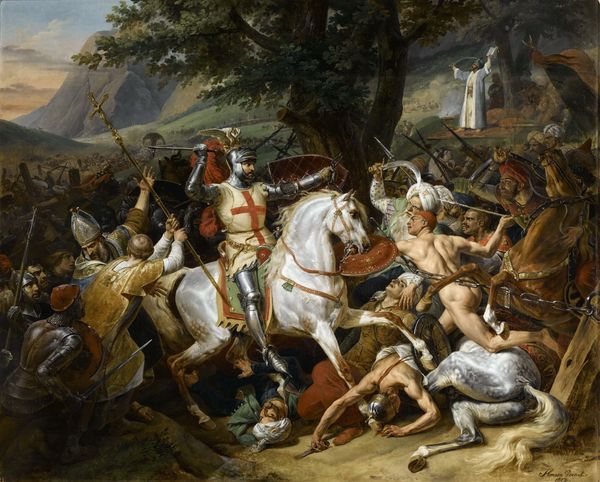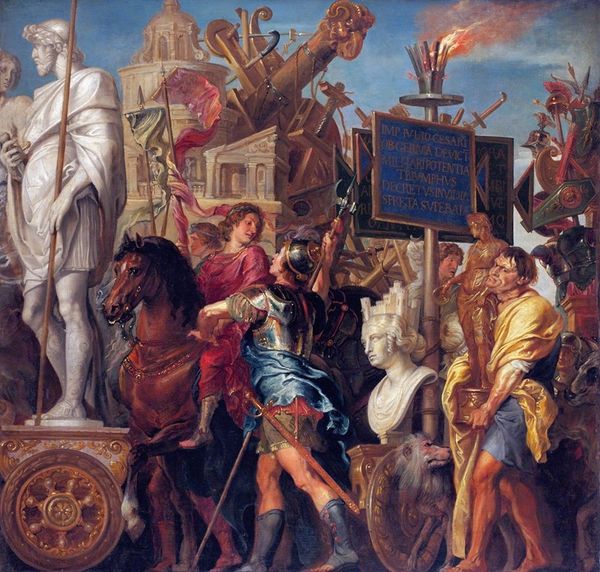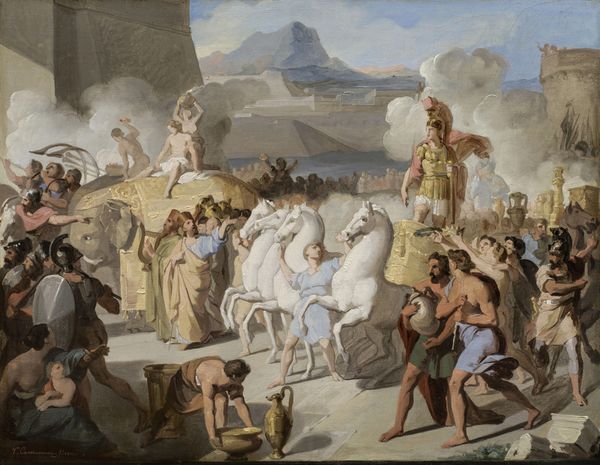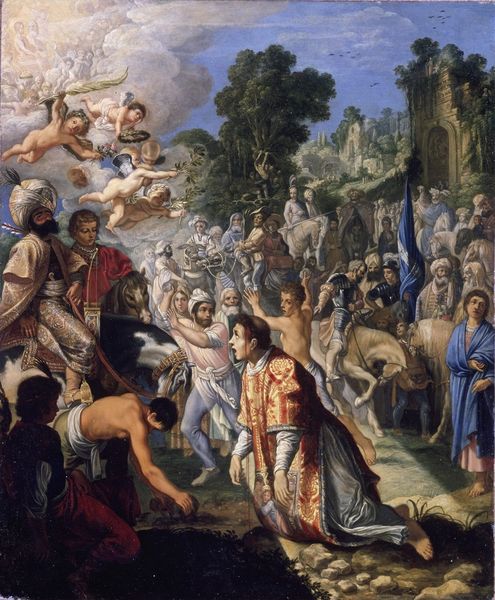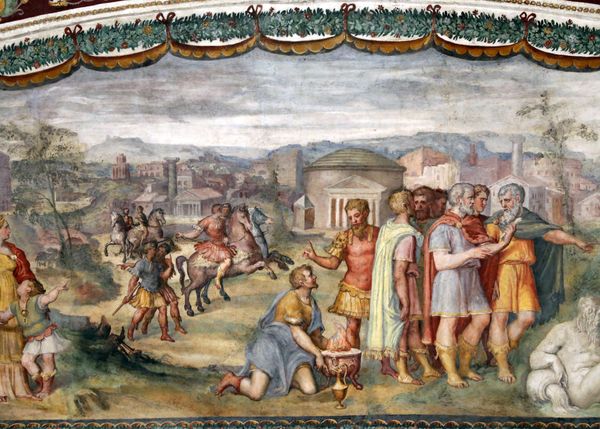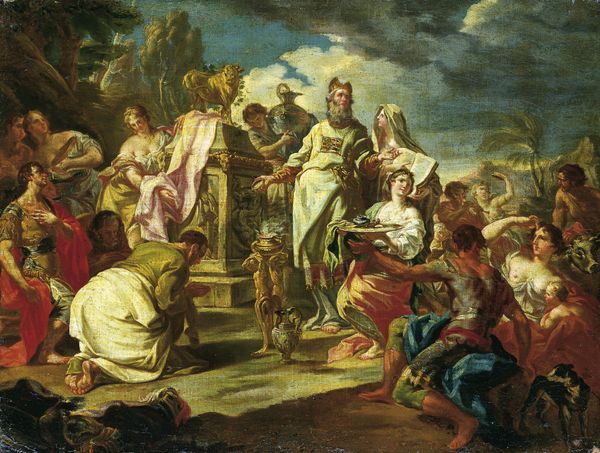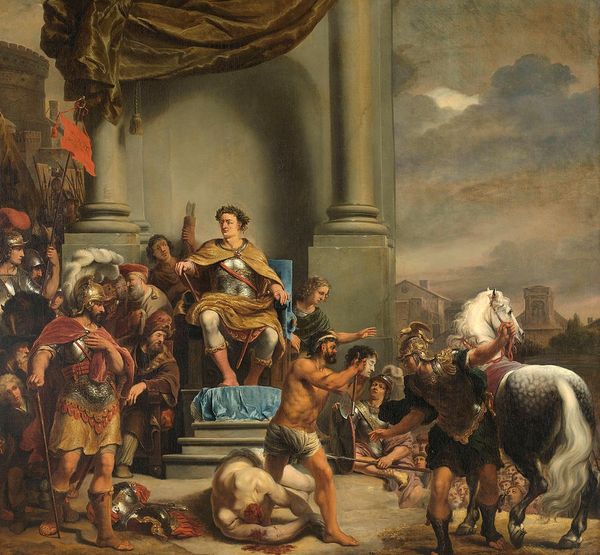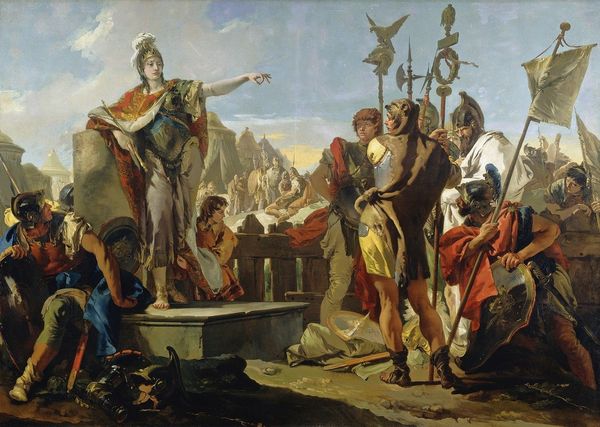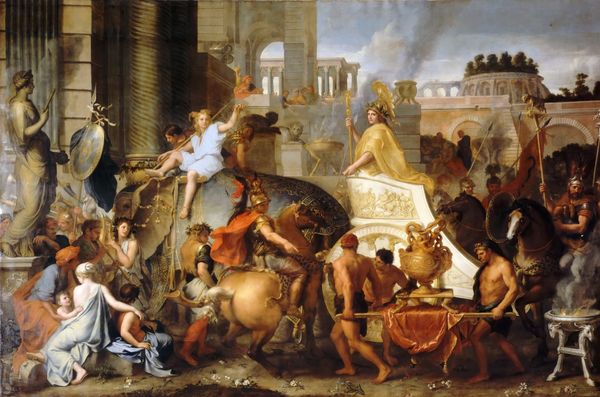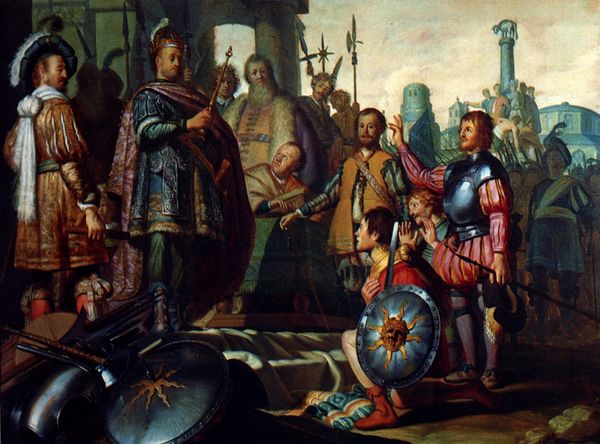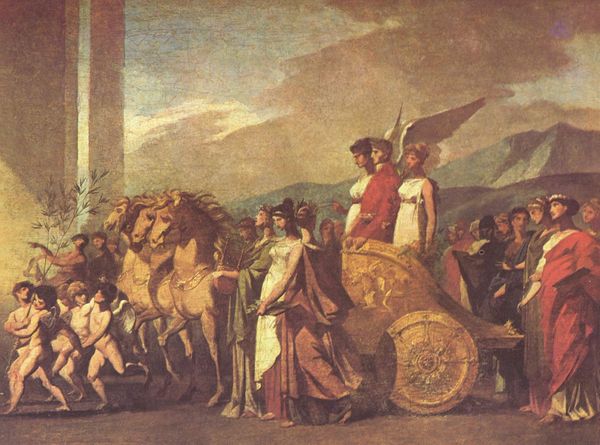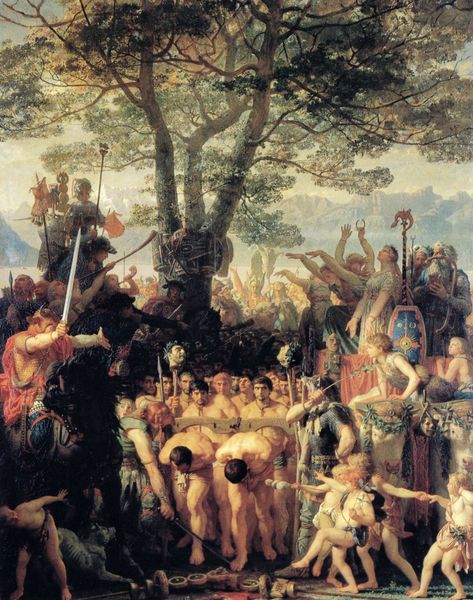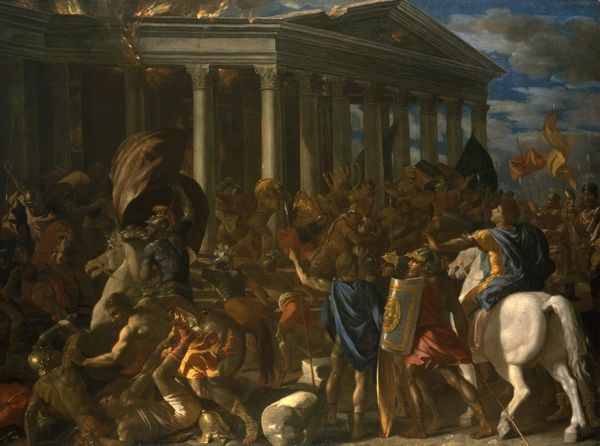
Triumph of Furius Camillus 1545
0:00
0:00
painting, oil-paint, architecture
#
portrait
#
painting
#
oil-paint
#
mannerism
#
figuration
#
oil painting
#
mythology
#
cityscape
#
history-painting
#
italian-renaissance
#
architecture
Copyright: Public domain
Francesco de' Rossi, known as Salviati, painted this fresco of the Triumph of Furius Camillus here in the Palazzo Vecchio in Florence, sometime in the mid-16th century. The fresco technique involves applying pigment to wet lime plaster, a process demanding speed and precision. Salviati and his workshop would have prepared the wall, applying layers of plaster, and then transferred the design, perhaps using a full-scale drawing called a cartoon. Pigments, ground from minerals and plants, were then applied directly to the wet plaster. This labor-intensive process required not only artistic skill, but also careful management of time and materials. The sheer scale of the painting speaks to both the wealth of the commissioning family, and to the labor required to complete such a grand work. Beyond the artistry, consider the social context: the mining and preparation of pigments, the skilled labor of plasterers and assistants, and the complex organization required to bring such a vision to life. Considering the materials, the making, and the context allows us to appreciate the true depth of this Renaissance masterpiece, and challenge the traditional divide between art and craft.
Comments
No comments
Be the first to comment and join the conversation on the ultimate creative platform.
